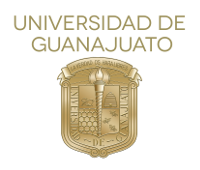Please use this identifier to cite or link to this item:
http://repositorio.ugto.mx/handle/20.500.12059/13451Full metadata record
| DC Field | Value | Language |
|---|---|---|
| dc.rights.license | http://creativecommons.org/licenses/by-nc-nd/4.0 | es_MX |
| dc.contributor | Pablo Jesús Ramírez Barajas | es_MX |
| dc.creator | VICTOR FRANCISCO DIAZ ECHEVERRIA | es_MX |
| dc.date.accessioned | 2025-03-04T21:48:02Z | - |
| dc.date.available | 2025-03-04T21:48:02Z | - |
| dc.date.issued | 2024-08-28 | - |
| dc.identifier.uri | http://repositorio.ugto.mx/handle/20.500.12059/13451 | - |
| dc.description.abstract | El objetivo fue conocer la contribución de la diversidad florística de la selva baja inundable (SBI) y la selva mediana subperennifolia (SMS) en la composición botánica de la dieta del venado cola blanca. Se calcularon los índices de valor de importancia (IVI) de las especies, el índice de Margalef (Dmg) y el índice de Shannon (H ́), así como la composición botánica de la dieta. La mayor diversidad se encontró en la SMS (H’ = 3.96-3.99; Dmg = 12.11-12.17), comparada con SBI (H’ = 3.80; Dmg = 10.51), y se identificaron 75 especies consumidas por los venados. La dieta del venado se relaciona con un mayor IVI de las especies. Las principales especies en la dieta fueron Cladium mariscus subsp. jamaicense, Thevetia ahouai, Byrsonima bucidifolia, Machaerium cirrhiferumy Dalbergia glabra. Se concluye que la alta diversidad de especies de las selvas tropicales provee una elevada oferta alimenticia a los venados cola blanca, predominando el consumo de especies de las familias Fabaceae, Cyperacea, Rubiaceae y Malvaceae. | es_MX |
| dc.language.iso | spa | es_MX |
| dc.publisher | Universidad de Guanajuato | es_MX |
| dc.relation | https://doi.org/10.15174/au.2024.4113 | es_MX |
| dc.rights | info:eu-repo/semantics/openAccess | es_MX |
| dc.title | Aporte de la diversidad florística de diferentes estados sucesionales de selva tropical en la dieta del venado cola blanca (Odocoileus virginianus; Artiodactyla: Cervidae) | es_MX |
| dc.title.alternative | Contribution of the floristic diversity of different successional conditions of tropical forest in the diet of white-tailed deer (Odocoileus virginianus; Artiodactyla: Cervidae) | en |
| dc.type | info:eu-repo/semantics/article | es_MX |
| dc.creator.id | info:eu-repo/dai/mx/cvu/68535 | es_MX |
| dc.subject.cti | info:eu-repo/classification/cti/2 | es_MX |
| dc.subject.cti | info:eu-repo/classification/cti/24 | es_MX |
| dc.subject.cti | info:eu-repo/classification/cti/2401 | es_MX |
| dc.subject.keywords | Riqueza de especie | es_MX |
| dc.subject.keywords | Plantas comestibles | es_MX |
| dc.subject.keywords | Ungulado | es_MX |
| dc.subject.keywords | Alimento | es_MX |
| dc.subject.keywords | Trópico | es_MX |
| dc.subject.keywords | Species richness | en |
| dc.subject.keywords | Edible plants | en |
| dc.subject.keywords | Ungulate | en |
| dc.subject.keywords | Food | en |
| dc.subject.keywords | Tropic | en |
| dc.contributor.id | info:eu-repo/dai/mx/orcid/0000-0002-6887-0665 | es_MX |
| dc.type.version | info:eu-repo/semantics/publishedVersion | es_MX |
| dc.creator.two | Tomas Silva Arano | es_MX |
| dc.creator.three | Samuel Albores Moreno | es_MX |
| dc.creator.four | Ismael Pat Ake | es_MX |
| dc.creator.five | José-Armando Alayón-Gamboa | es_MX |
| dc.creator.idtwo | info:eu-repo/dai/mx/orcid/0000-0003-0821-9114 | es_MX |
| dc.creator.idthree | info:eu-repo/dai/mx/orcid/0000-0002-2483-2157 | es_MX |
| dc.creator.idfour | info:eu-repo/dai/mx/orcid/0000-0002-2108-7286 | es_MX |
| dc.creator.idfive | info:eu-repo/dai/mx/orcid/0000-0003-0034-4973 | es_MX |
| dc.contributor.one | MIRNA VALDEZ HERNANDEZ | es_MX |
| dc.contributor.two | IVAN OROS ORTEGA | es_MX |
| dc.contributor.three | Addy Consuelo Chavarria Diaz | es_MX |
| dc.contributor.idone | info:eu-repo/dai/mx/cvu/252876 | es_MX |
| dc.contributor.idtwo | info:eu-repo/dai/mx/cvu/207384 | es_MX |
| dc.contributor.idthree | info:eu-repo/dai/mx/orcid/0000-0001-8953-8525 | es_MX |
| dc.description.abstractEnglish | The objective was to know the contribution of the floristic diversity of the low flooded (SBI) and medium semievergreen (SMS) forests, in the botanical composition of the diet of the white-tailed deer. The importance value indices (IVI) of the species, the Margalef index (Dmg), and the Shannon index (H'), as well as the botanical composition of the diet, were calculated. The greatest diversity was found in the SMS (H' = 3.96-3.99; Dmg = 12.11-12.17), in contrast to SBI (H' = 3.80; Dmg = 10.51), and 75 species consumed by deer were identified. The diet of the deer is related to a higher IVI of the species. The main species in the diet were Cladium mariscus subsp. jamaicense, Thevetia ahouai, Byrsonima bucidifolia, Machaerium cirrhiferum, and Dalbergia glabra. It is concluded that the high species diversity of tropical forests provides a high food supply to white-tailed deer, with the consumption of species from the Fabaceae, Cyperacea, Rubiaceae, and Malvaceae families predominating. | en |
| Appears in Collections: | Revista Acta Universitaria | |
Files in This Item:
| File | Description | Size | Format | |
|---|---|---|---|---|
| APORTE~1.PDF | 2.26 MB | Adobe PDF | View/Open |
Items in DSpace are protected by copyright, with all rights reserved, unless otherwise indicated.

